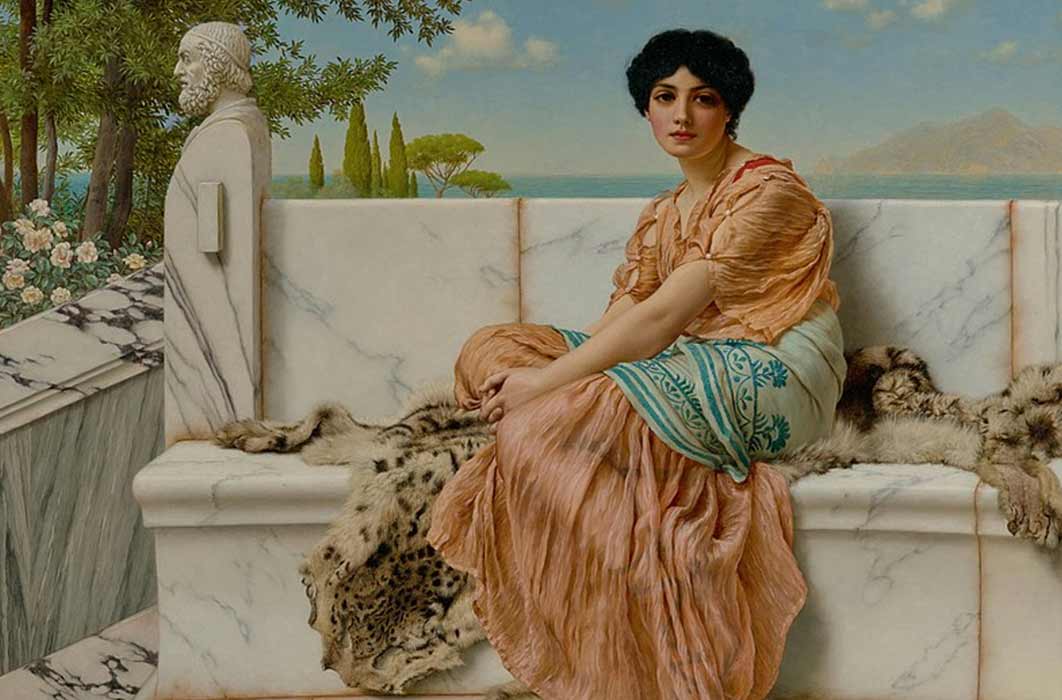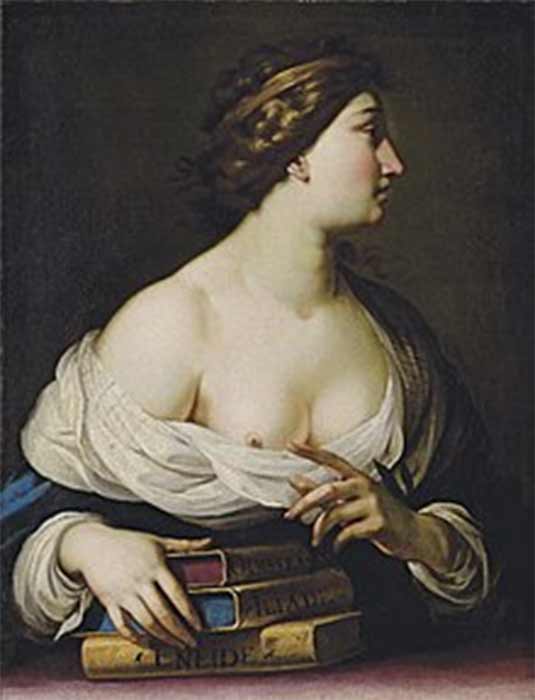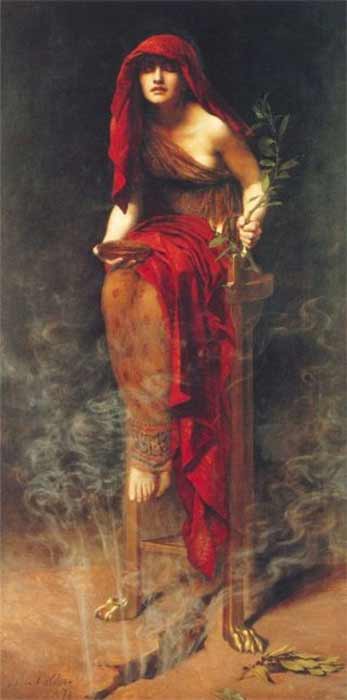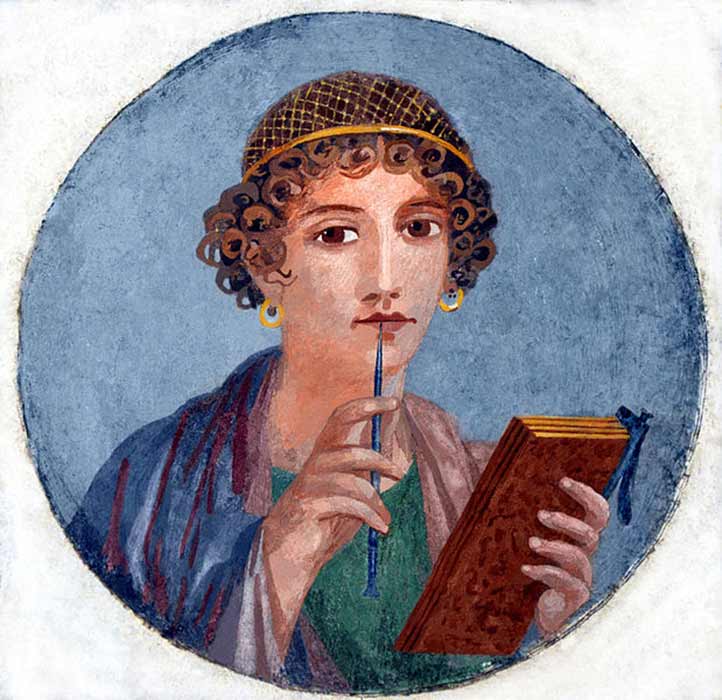
Telesilla, Warrior Poetess From Argos, Who Manned-Up On The Battlefield and Bedroom
An ancient oracle told by a Pythian priestess says, “But when the time shall come that the female conquers in battle, driving away the male, and wins great glory in Argos, then many wives of the Argives shall tear both cheeks in their mourning.” This oracle was later alluded to by historian Herodotus (c. 484 – c. 425 BC) and geographer Pausanias (c. 110 AD – c. 180 AD). The female whom this oracle refers to was Telesilla, a woman renowned for her leadership of Argos through its political and military crisis and subsequent re-building. Telesilla was not only a warrior but also a poet. She was evidently renowned enough that Antipater of Thessalonica, the author of over a hundred epigrams in the Greek Anthology, saw it fit to include her in his canon of nine female poets.

Calliope, muse of eloquence and epic poetry by Cesare Dandini. Christie's (Public Domain)
In battle, Telesilla was formidable. In his Mulierum Virtutes (Bravery of Women), Plutarch tells that in 494 BC, when king of the Spartans Cleomenes I moved his troops against the city of Argives after killing many of the Argaean men, the younger women of Argives rose up to hold off the enemy to preserve their country. Led by Telesilla, the women took up arms and guarded the walls all around the city. Socrates reports that despite experiencing great loss in their numbers, the women fought Cleomenes and another king, Demaratus, who had managed to infiltrate the city wall and gained possession of the Pamphyliacum. The women saved the city and those who fell in battle were buried close by the Argive Road. A statue of Ares was erected as a memorial to the valor of those who died and those who survived. Legend has it that the battle happened on the seventh day of the month which is now known as the tetartou (Fourth Month). Polyaenus tells that the Argives knew this month as Hermaeus. On the first day of the month of Hermaeus, they celebrated the Hybristika (Festival of Impudence) where the women were clothed in men’s shirts and cloaks, and the men in women’s veils and robes.

Priestess of Delphi by John Collier, showing the Pythia sitting on a tripod with vapor rising from a crack in the earth beneath her (1891) Art Gallery South Australia (Public Domain)
Telesilla, The Sickly Poetess
Telesilla, the woman who is credited in instigating the rise of the women of Argos, was a poetess. A daughter of a well-known family, Telesilla was a sickly young girl. She later travelled to Pythia to seek advice about her health. Pythia, the high priestess and oracle of the Temple of Apollo at Delphi, told her to τὰς Μούσας θεραπεύειν (serve the Muses). Taking this advice to heart, Telesilla henceforth dedicated her life to the study of poetry and music. She soon found herself healed. As an additional blessing, she acquired fame as a great lyric poet. From the considerable body of work she produced, only two lines remains as quoted by the ancient grammarian Hephaistion of Alexandria in his Ἐγχειρίδιον περὶ μέτρων (Handbook on Meter) in c. 96 AD. However, references to Telesilla herself appear in the works of Pausanius (c. 110-180 AD), Plutarch (45-120 AD) and Athenaeus (c. third century AD), among others.
- The Poetry of Gods by Enheduanna - The First Known Female Writer
- Sappho: Putting Together Fragments to Gain an Image of the Tenth Muse
- 11 of the Most Ancient and Continually Occupied Cities in the World
Antipater of Thesalonike (c. 15 BC) listed Telesilla as one of the great Nine Female Lyric Poets of Greece in his Anthologia Palatina. She was listed along with Praxilla of Sicyon, the Byzantium poet Moero, the Arcadian poet Anyte of Tegea whom Antipater dubbed ‘the female Homer’, Sappho of Lesbos whom he called “the ornament of the fair-tressed Lesbian women”, Erinna of Tilos, Corinna of Tanagra “who sang of Athena’s martial shield”, the “maiden-throated” Nossis, and Myrtis “the sweet-voiced”. “These are the divinely tongued women who were reared on the hymns of Helicon and the Pierian Rock of Macedon” Antipater wrote, “all of them fashioners of the everlasting page. Nine Muses Great Ouranos bore, Nine likewise Gaia, to be a joy undying for mortals.”

Pompeii fresco: Woman with wax tablets and stylus (so-called "Sappho") National Archaeological Museum of Naples (Public Domain)




